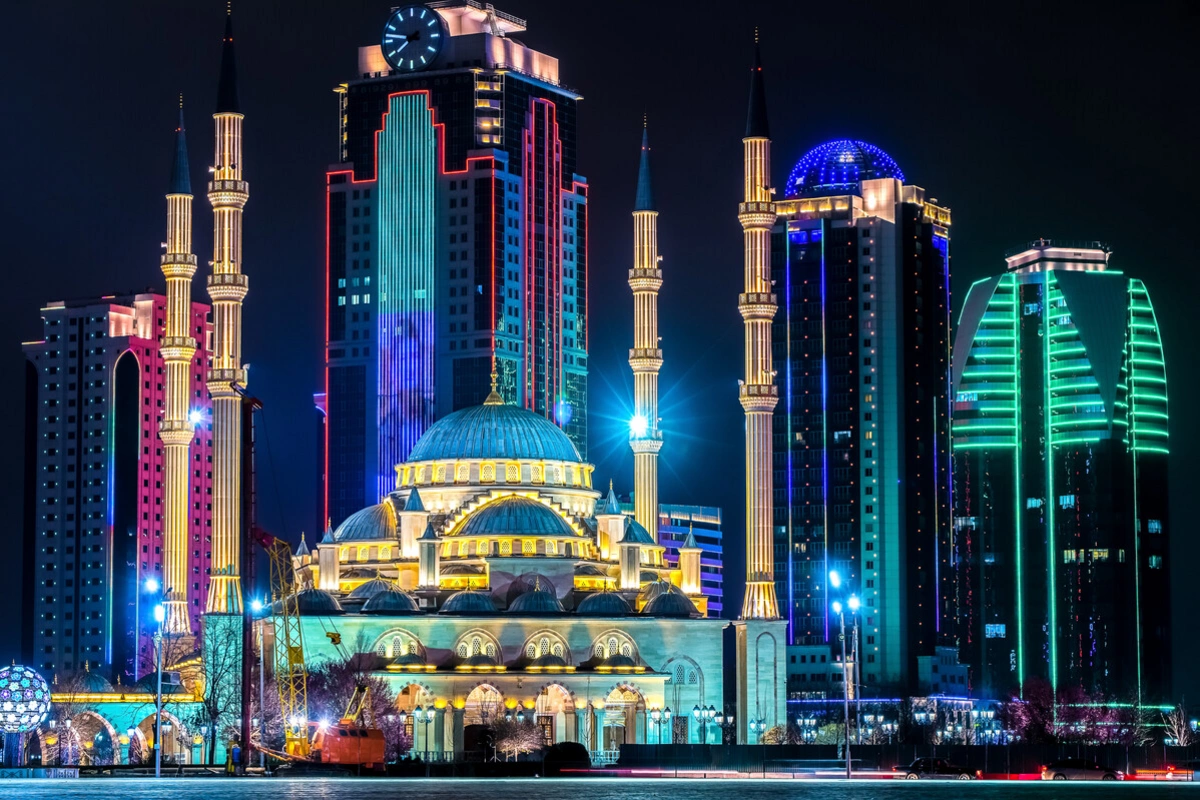
It’s a wildcard, but Grozny creeps into our top five cities for contemporary architecture, thanks in part to its extraordinary ambition as expressed in the plans for the phenomenal Akhmat Tower.
Grozny at night. Image: Oleg Chudnikov/Shutterstock
Grozny? Really!? If you still imagine the capital of Chechnya as the bombed-out wreck from the 1990s, think again. The town hasn’t yet managed to make itself the “Dubai of the North Caucasus,” although that seems to be its ambition. Nonetheless, seen at night from certain angles, the skyline has a highly colourful sense of

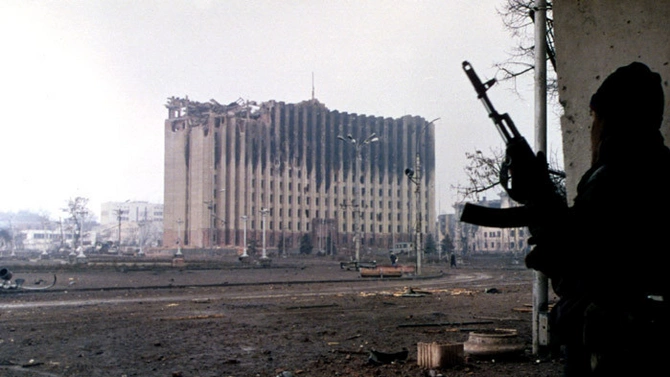
In 1995 and 1996, the bombed-out former communist party headquarters was a symbol of the chaos and brutality of the Chechen civil war. Today, in enormous contrast, it’s the site of the city’s magnificent mosque. Image: Wikimedia Commons
Close to the mosque, the flashy new

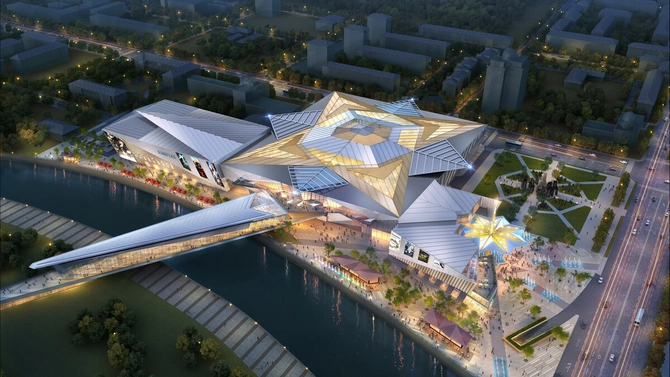
Architects’ image of the Grozny Mall, which is now nearing completion. Image: Aawards
The centre extends a long, glass finger across the canalized river to a large building site where – if it is ever built – the Akhmat Tower will rise 102 storeys as Europe’s second-tallest building (430m). The gently tapering shape vaguely emulates the medieval stone tower-houses of the Caucasian highlands and was conceived by Chicago-based Adrian Smith and Gordon Gill, best known for creating the Burj Khalifa – currently the world’s tallest structure.
Across busy Prospekt Kadyrov highway, Grozny-City Towers is the city’s main group of white and blue-glass skyscrapers. They look a little less impressive by day than by night, but the prominent 40-storey Phoenix Tower is an unmissable sight. That’s thanks mainly to the gigantic timepiece on its crown: at 14m diameter and with a minute hand 7.3m long, it’s one of the world’s top ten biggest clocks.
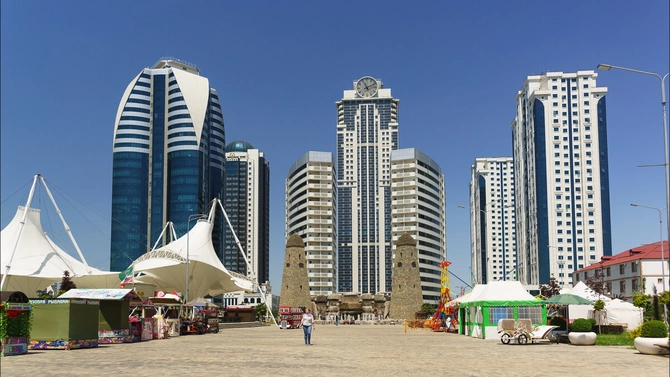
Phoenix Tower is at the centre of seven skyscrapers that form the Grozny-City Towers complex. The two smaller stone towers in front emulate Chechnay’s traditional Vainekhen mountain architecture. Image: Garmasheva Natalia/Shutterstock
The Phoenix Tower is a mainly residential apartment block that took its current name after a spectacular fire suffered when it was nearing completion in April 2013. The exterior plastic cladding was severely damaged, but the main structure itself was not irreparably damaged, and the frontage has since been extensively reworked.
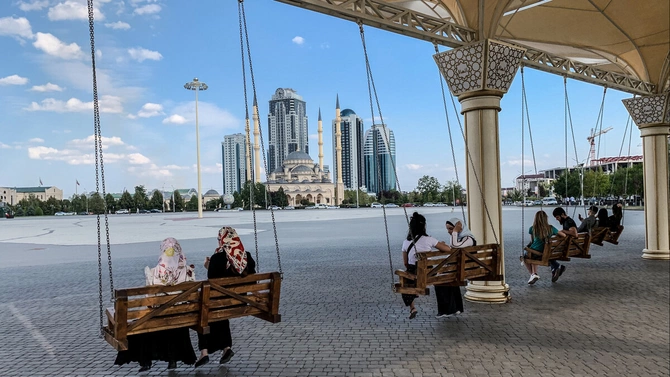
Grozny 2021 is a very different place from the warzone Grozny of 1996. Image: archdaily.com

Central Grozny at night. Image: Semenov Ivan/Shutterstock
Completing the modernist ensemble that gives Grozny its new sparkle is a vast domed building known as ‘Dom Priyomov’ (The House of Receptions). It’s a cultural centre home to a philharmonic orchestra, art school, ballroom, and a theatre that – its designers proclaimed when the construction started in 2010 – should have acoustics to challenge those of Milan’s La Scala.
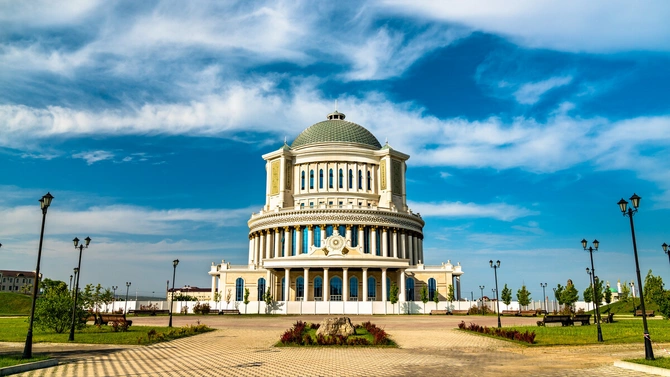
Grozny’s ‘Dom Priyomov’ (House of Receptions). Image: Leonid Andronov/Shutterstock
The building could be the love child of the US Capitol with the great 14th-century Dome of Soltaniyeh. However, the inspiration was actually Moscow’s Cathedral of Christ the Saviour: not the version that was finally built, but the original 1817 plan as sketched by neoclassical architect Alexandr Vitberg. To create extra space, a significant extra cylinder has raised the dome considerably higher than Vitberg ever intended.
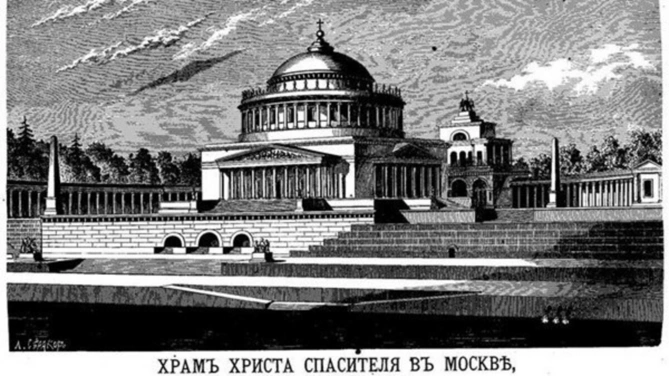
Although construction had started on Vitburg’s Moscow church project, work stopped when a new tsar came to power and decided that the design was not suitably Orthodox. The 1817 plans were finally rediscovered and now form the inspiration of Grozny’s Dom Priyomov.
The dome itself glows brightly at night in

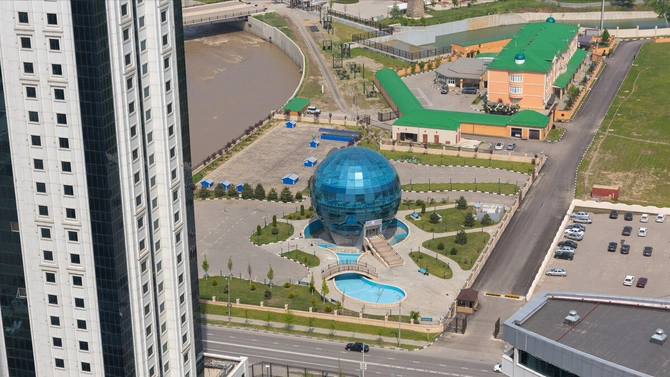
Image: Pozdeyev Vitaly/Shutterstock
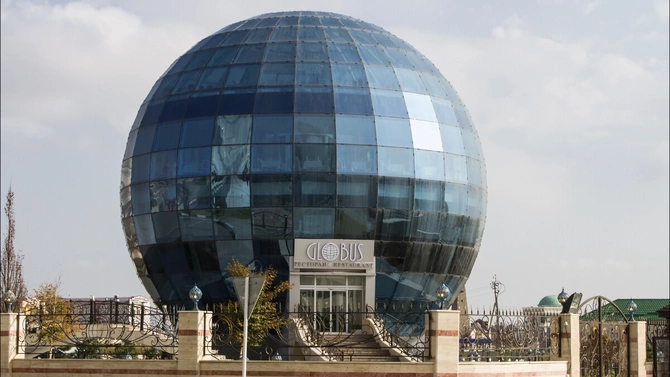
Globus Restaurant. Image: alenvl/Shutterstock
Share on social media